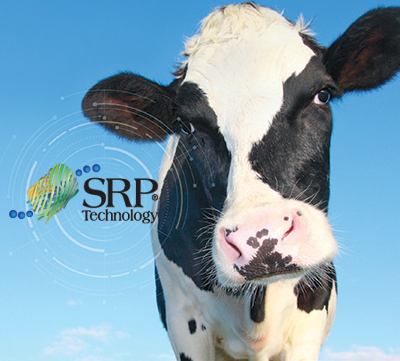Good management practices when using vaccines for prevention of coliform mastitis in cattle
In general, why vaccinate?
In both human and veterinary medicine, vaccines represent one of the greatest technological advancements of modern science in the prevention and control of serious infectious diseases. Vaccines help to prevent disease by stimulating the immune system against the infection and by diminishing the severity of the clinical signs when the disease occurs. They can also contribute to diminish the shedding of pathogens in the environment and improve the answer to treatment. Their use is also beneficial economically, as the cost of vaccinating many individuals is often comparable to the cost of treating just one individual that gets sick with the disease that we are trying to prevent. Vaccines greatly reduce disease incidence and improve the overall health status of individual animals and the entire population through herd immunity.
Coliform mastitis
Coliform mastitis, especially Klebsiella mastitis, exemplifies this principle perfectly. Klebsiella mastitis infections are seriously debilitating and often fatal to individual animals. They require extensive treatment with drugs such as antimicrobials, anti-inflammatories and fluids, and have a very poor prognosis even with aggressive therapy. Although herd management is a key factor in the control of coliform mastitis, gaps do exist. Even well managed herds can have increased cases of coliform mastitis due to in-herd variability and uncontrollable external factors. Therefore, vaccination for coliform mastitis is a very important and useful tool in the arsenal of any dairy producer to help improve animal health and herd productivity.
Types of vaccines
There are several vaccine products available for the control of coliform mastitis. Traditionally we have used J-5 core antigen vaccines to effectively control the clinical signs associated with E. coli mastitis. These vaccines have been used to prevent other causes of coliform mastitis such as Klebsiella with variable efficacy. More recently, an SRP vaccine used in the United States specifically for Klebsiella mastitis was approved for use in Canada.
SRP Technology
Vaccine safety
In North America, vaccines are rigorously tested and monitored for efficacy and for safety. Although rare, vaccine reactions can occur, even with gram negative coliform vaccines. This is because vaccines elicit an immune response that differs between animals and they contain various different ingredients (like the antigen and the adjuvant) which animals may respond to differently. The most common reaction is a decrease in milk production following vaccination, but other reactions such as the development of hives, ill thrift or inappetance may also occur transiently. Rarely, more serious events can occur such as abortions, difficulty breathing, recumbencey, convulsions or even a fatal reaction.
Good vaccination practices that producers should do when vaccinating animals
- Make sure to always follow label indications or the specific directions given by your herd’s veterinarian. As an example, the Klebsiella Vetovax SRP label states that heifers should receive their first dose 30 days after calving.
- Store the product between 2°C and 8°C (35°F and 46°F) and avoid freezing. Do not administer a product that you suspect to be contaminated or with an abnormal colour. The best way to verify this is to ensure that the vaccine has an even consistency after being agitated. If there are any doubts, contact your veterinarian or the vaccine
- Always make sure to vaccinate healthy animals and avoid vaccinating animals that have an underlying disease condition or during periods of high stress (i.e. heat stress).
- Change needles between animals and always use clean syringes or dosing guns.
- Avoid using too many products or other vaccines in individual animals at the same time. When multiple products must be used together, check with your herd veterinarian to verify which products can be given together safely and which ones should be avoided.
- Monitor animals for at least 2 hours after vaccination. Vaccine reactions typically occur soon after administration, and the most common cause of fatal vaccine reactions is not properly treating any animal that reacts. If a reaction is seen, notify your veterinarian immediately and administer treatment as soon as possible.
Treating vaccine reactions
Prompt and proper treatment is the best way to avoid fatalities. Producers can administer appropriate treatments according to label indications or veterinary directions.
- Appropriate treatment for vaccine reactions typically involves the use of anti-inflammatories, epinephrine and/or antihistamines. Producers should discuss treatment with their veterinarian and ensure that they have these products readily available before vaccinating their animals. As an example, the label indication for treating animals that react to Klebsiella Vetovax SRP is to "administer flunixin meglumine (Flunazine® or Vetonixin®) and/or epinephrine"
- As treatment varies between products, it is advisable to have a veterinary derived Standard Operating Procedure (SOP) on hand for the treatment and management of any reactions occurring from any products used on farm.
In the event of a reaction
All vaccine reactions, whether fatal or not, should be reported to your veterinarian as soon as possible. Your veterinarian should then report them to the vaccine company.
In the event of death following vaccination
Report the situation to your veterinarian as soon as possible. The cause of any death following vaccination needs to be investigated as the death may have been due to other diseases or illnesses that were unrelated to the vaccine. The only way to be certain is to have a post-mortem examination done to rule out other causes. Your veterinarian will judge if a necropsy is required. Most vaccine companies may offer to assist with the costs associated with post-mortem exams in order to maintain high quality pharmacovigilance reports.

